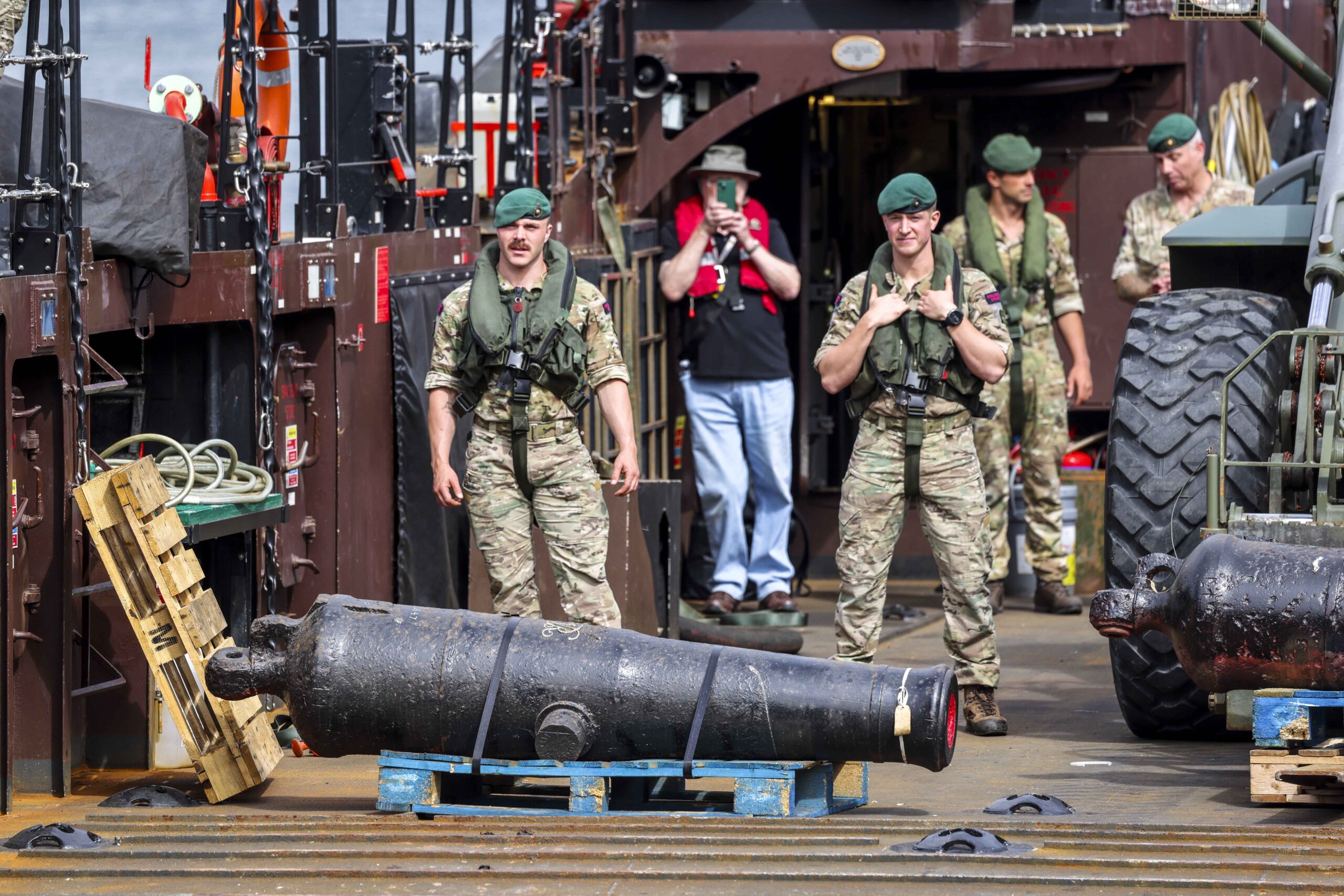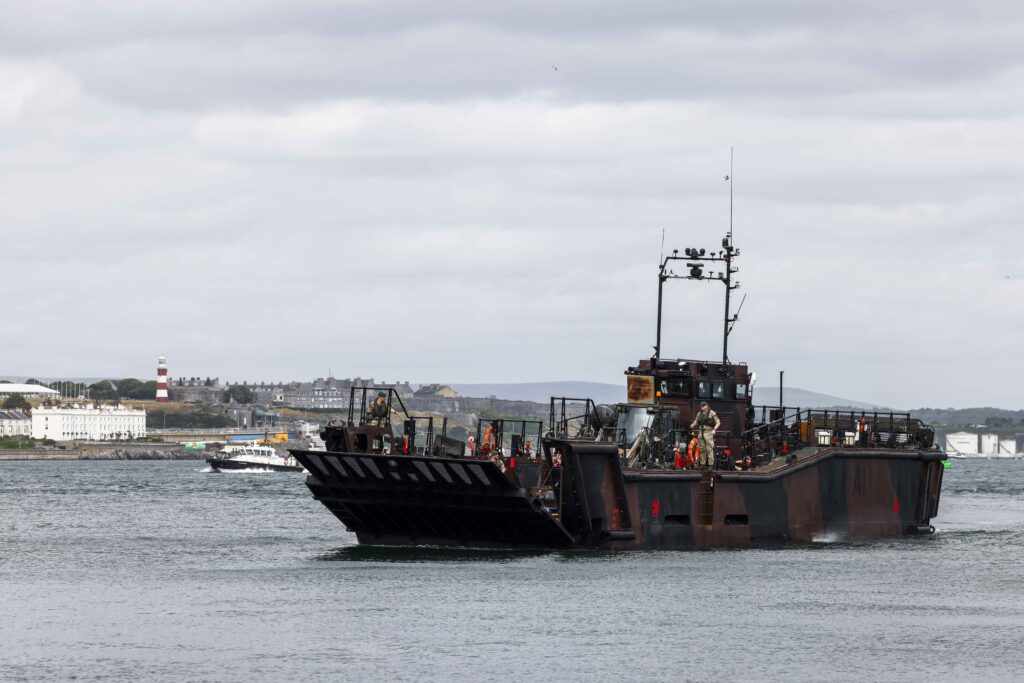
They’re used to delivering firepower to beaches: howitzers, Viking armoured vehicles, Challenger 2 battle tanks. But what about Victorian cannon?
The Navy’s specialists in amphibious operations, 47 Commando Raiding Group Royal Marines were called on to make a special delivery in Plymouth Sound National Marine Park as they shipped two 160-year-old guns from Devonport Naval Base to Mount Edgcumbe Country Estate across the water in Cornwall for a planned new display on the historic defences which once protected the key harbour.
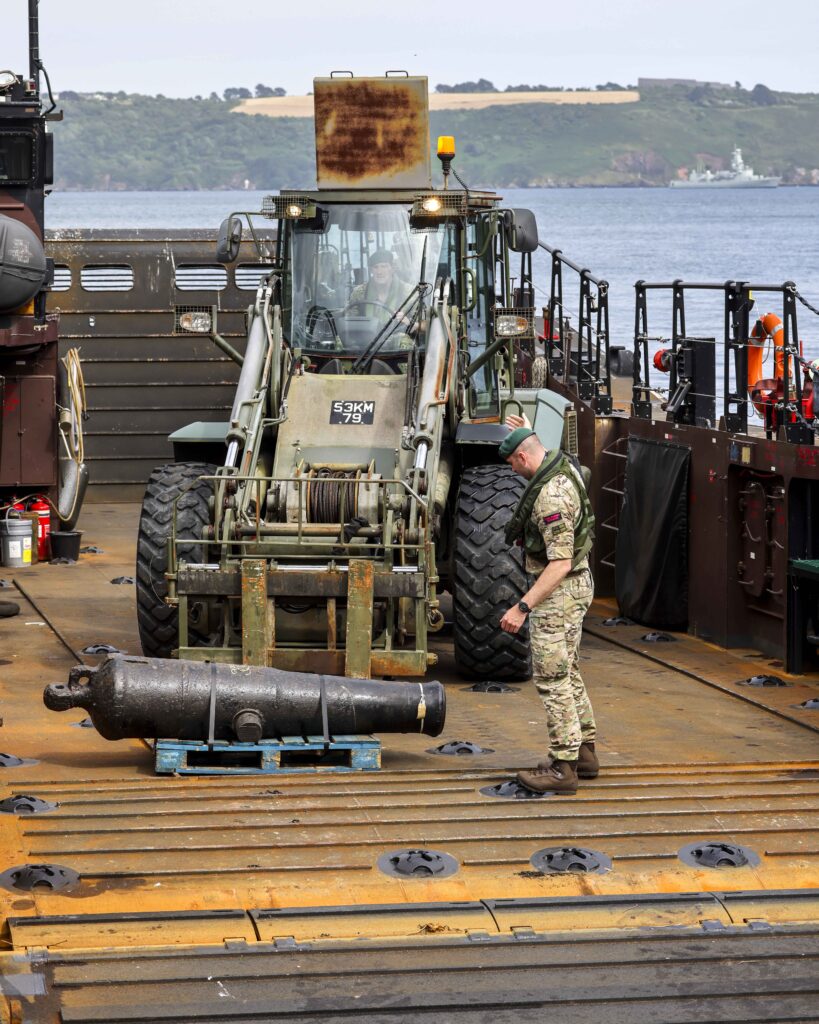
The 32 pounders, dating to the late 1840s (pre-dating the Crimean War and the Great Exhibition at Crystal Palace) were part of the naval base’s heritage collection.
It was asked to loan the guns to the estate where they’ll go on display in the Garden Battery – once part of the outer ring of Plymouth’s defensive fortifications, built to protect the Royal Navy’s Dockyard at Devonport.
While heavy, at two tonnes the cannon were well within the capacity of one of 47’s Landing Craft Utility… but not especially mobile and too heavy for any equipment the heritage centre, so send in the marines.
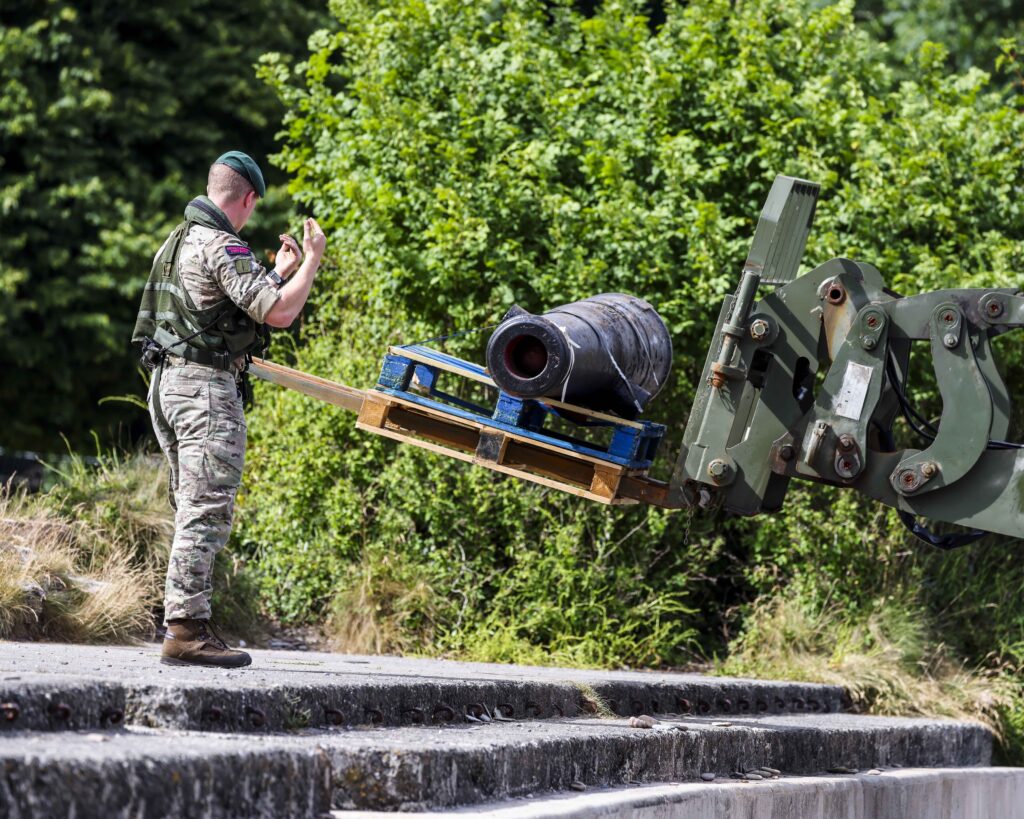
With the help of a forklift truck and some sturdy pallets, the green berets ferried the cannon the short distance across the Hamoaze to Barn Pool beach and then to their destination.
The provenance of the old weapons is not known, said Heritage Centre volunteer Paul Santillo, who was overseeing the move, beyond dating back to 1847 and 1849 respectively.
“We have a few of these cannons in the collection and it’s quite usual to loan them out for exhibitions to other museums and collections,” he explained.
“We’re not too sure what they were originally used for in the defence of Plymouth, but they could have been on one of the surrounded gun battery locations, such as the Garden Battery at Mount Edgcumbe.”
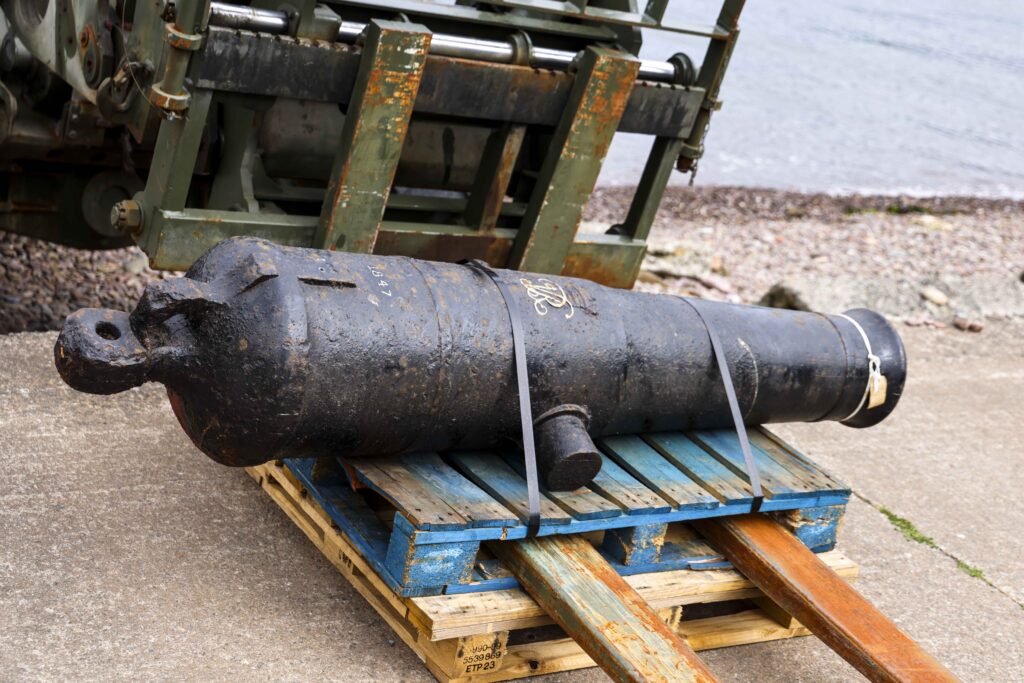
It’s earmarked for a major revamp using National Lottery funding and Paul is delighted to give some of the base’s impressive – but largely unseen – collection of historic nauticalia and weaponry a public airing by loaning objects out, such as to the new Box centre in Plymouth.
“Most museums have up to 80 to 90 per cent of their collections in storage, so this is a good opportunity to let the public see these objects, which would otherwise stay locked away never to be seen.
“It’s been good to get the Royal Marines and their landing craft involved – it all came together quite nicely. These cannons were just too heavy for our equipment, the Royal Marines have really pulled it off, it’s been really nice of them to help us, it’s just been great.”


